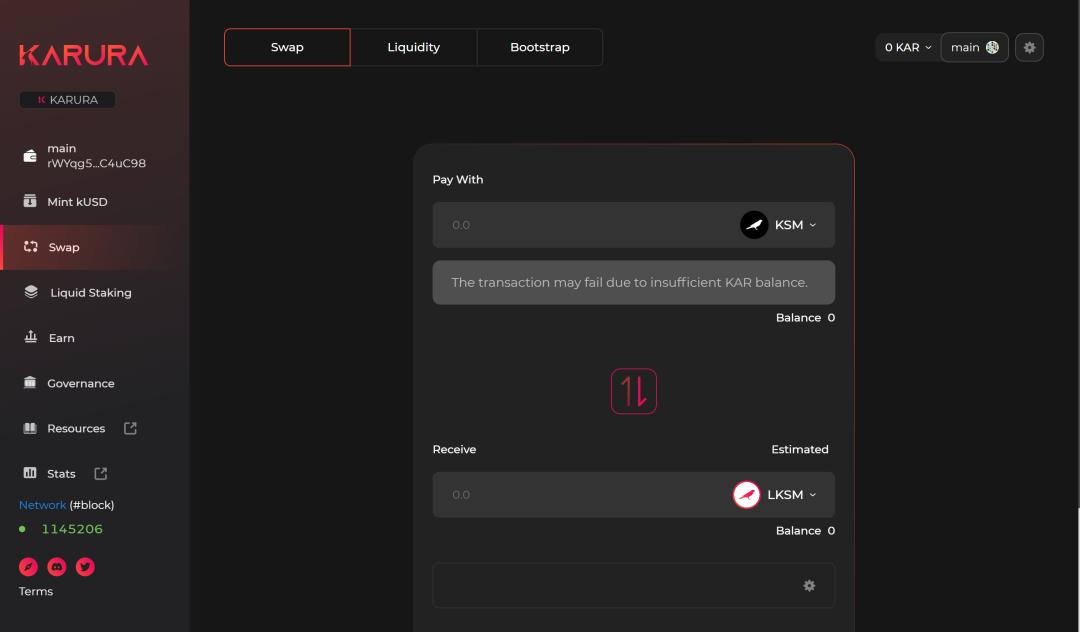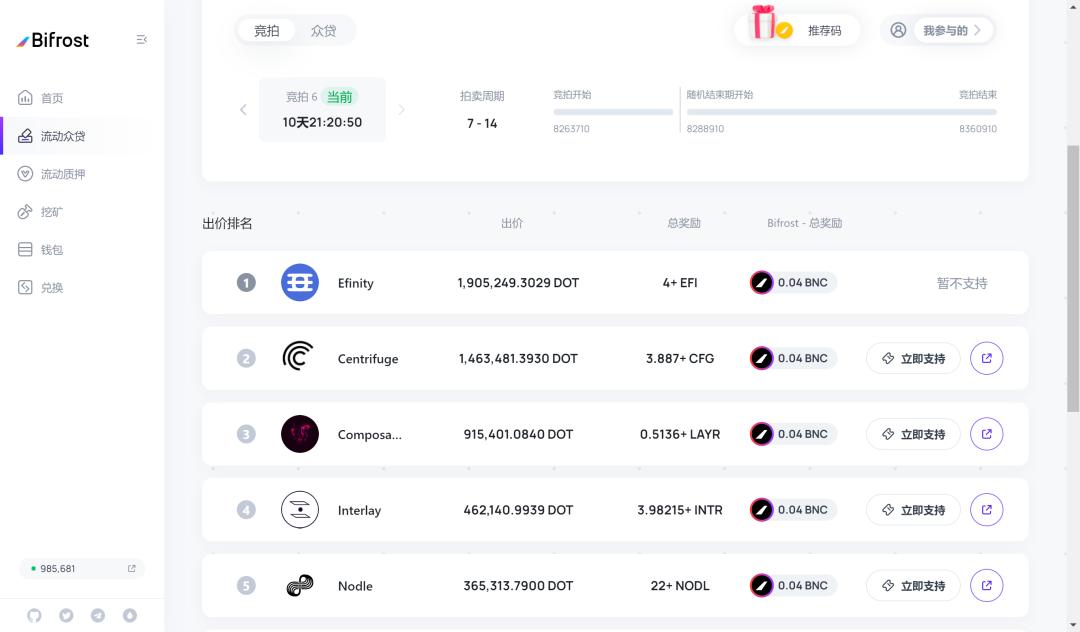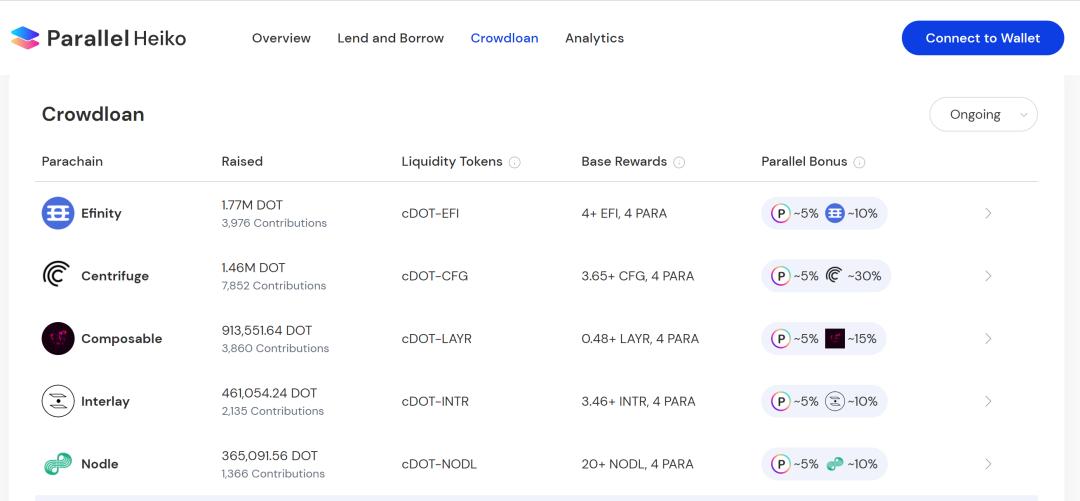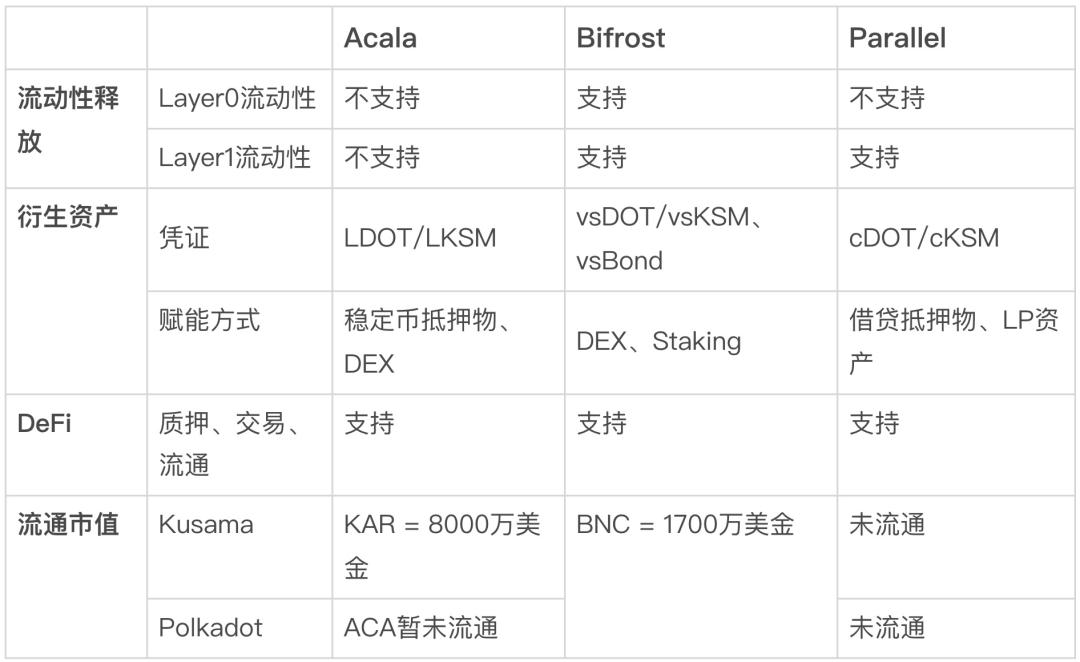A comparison of three liquidity solutions in the Polkadot ecosystem: Acala, Bifrost, Parallel
Original Author: Blockchain Research Society
Original Title: "What Liquidity Solutions Are Available in the Polkadot Ecosystem?"
As the industry's focus shifts from the Bitcoin scalability issue to the Ethereum scalability issue, the Polkadot ecosystem is still undergoing positive changes. The parallel chains of Kusama and Polkadot have begun to operate steadily. Regardless of the solution, they are all addressing the problem of the growing demand for cryptocurrency and the inefficiencies of the underlying architecture.
Polkadot founder Gavin Wood anticipated this issue during his tenure as Ethereum's CTO, and thus integrated various excellent solutions into Polkadot's underlying technical architecture.
The core architecture of Polkadot uses a dual-layer structure of a relay chain and parallel chains to achieve the separation of consensus security and application performance, while Ethereum 2.0 optimizes this through a beacon chain and sharding or Layer 2 solutions. This layered design has become a fundamental consensus in the design process of public chains or protocols.
1. The Liquidity Dilemma of Public Chains or Protocols
For Polkadot's underlying architecture, both the consensus security of the relay chain and the resource usage of the parallel chains have certain staking requirements for its platform token DOT. Both demands will simultaneously lock the liquidity of DOT.
After the rise of DeFi, people began to weigh the benefits of earning through staking mechanisms against those of earning through DeFi. The former maintains the underlying network's consensus through staking, while the latter is an inevitable direction for ecological development. Therefore, how to effectively balance the competitive relationship between the two and avoid a situation where one side suffers at the expense of the other is a question that all public chains need to consider.
In response to this liquidity issue, many solutions have emerged, such as Lido, Bifrost, Acala, Stafi, etc.
The most representative among them is Lido, which is currently the largest liquidity solution for Ethereum. Lido has also gradually opened support for mainstream public chains like Terra and Solana, and will later add support for the Polkadot ecosystem.
2. How to Release the Liquidity Locked by Polkadot Parallel Chains?
Today, we will not discuss the differences among these solutions, but rather focus on the Polkadot ecosystem and how to address the liquidity issues during the parallel chain auction process.
After ensuring network security through the relay chain, project parties obtain the resource usage rights of parallel chains through bidding. However, since project parties need to hold a significant amount of DOT/KSM to have a chance of winning the election, this is unrealistic for most projects. Therefore, Polkadot provides a mechanism called Crowdloan, which allows project parties to raise DOT/KSM from users to participate in the competition for parallel chain resources, significantly lowering the threshold for parallel chain elections.
However, a similar problem arises: the operation of each parallel chain will lock DOT/KSM for different periods. As more DOT/KSM gets locked, the liquidity of DOT/KSM will decrease, which will severely restrict the development of the Polkadot ecosystem.
The rise of DeFi has provided users with rich asset management tools, and the demand for liquidity of DOT/KSM may greatly exceed the need for rewards obtained through staking.
3. Three Current Liquidity Solutions in the Polkadot Ecosystem
In response to the liquidity issues in the Polkadot ecosystem, there are currently three main solutions.
1. Acala:
Acala is a well-known project in the Polkadot ecosystem, aiming to become a decentralized financial center and stablecoin platform. Acala mainly consists of a cross-chain multi-asset collateral stablecoin system, liquidity release protocol, DEX trading platform, and oracle services. Acala is also a smart contract platform.
To address liquidity issues, Acala generates a derivative asset called LDOT (its canary network Karura corresponds to LKSM) to release the liquidity of the staked platform token. On one hand, it supports using LDOT as collateral in the stablecoin system; on the other hand, it adds liquidity support through the DEX. By adopting these two measures, it empowers the derivative assets to ensure that L assets have sufficient liquidity.
In fact, some liquidity release protocols we have seen generate a corresponding staking certificate, such as stETH for staked ETH in Lido and rDOT for staked DOT in Stafi. Due to token liquidity issues, these derivative assets always exist at a certain level of discount compared to the native assets. Therefore, how to ensure that derivative assets possess high liquidity becomes key to attracting users to stake assets.
From the well-functioning canary network Karura's products, we can basically understand its operating model. The products in the following image mainly include the minting of the stablecoin kUSD, decentralized exchange DEX (Swap), and liquid staking, among other core functions mentioned earlier.

Karura Product Interface
Currently, liquid staking only supports the staking of KSM and the unstaking of LKSM. The staked KSM is neither used to maintain the underlying consensus security nor for bidding on parallel chain slots. Therefore, LDOT or LKSM is more like a layer of encapsulation, similar to the difference between ETH and WETH. Thus, Acala's approach to solving liquidity issues seems not entirely thorough.
Currently, Acala has 213,000 Twitter users and 36,000 Telegram users. Acala successfully became the first elected parallel chain of Polkadot, indicating its broad recognition. The market cap of Acala's canary network Karura's platform token KAR is $81 million, while the token ACA on Polkadot has not yet circulated.
2. Bifrost:
Bifrost is a DeFi protocol focused on the liquidity release of staking assets. Bifrost not only conducts liquidity release for ETH2.0 staking but also provides liquidity release services for slot auctions on Polkadot and Kusama.
By staking through Bifrost, users can earn staking rewards while also receiving corresponding derivative assets, which can be traded, transferred, and participate in various DeFi activities. Derivative assets can be exchanged with native assets at a certain ratio and can continuously earn staking rewards, making them income-generating assets.
As Crowdloan has become an important feature in the Polkadot ecosystem, Bifrost has also become a significant entry point for Crowdloan. Currently, Bifrost's liquidity crowdloan solution supports both Kusama and Polkadot.

Bifrost Crowdloan Interface
In terms of specific implementation mechanisms, due to the different rental periods and rewards in the slot auction process, many tokens with different rights will be generated. Therefore, the Bifrost solution decouples the asset attributes from the rights attributes of the tokens and designs two types of derivatives: vsToken (Voucher Slot Token) and vsBond (Voucher Slot Bond).
Among them, vsToken (vsDOT/vsKSM) is a fungible token and serves as the user's staking certificate, representing the asset attributes of the user's participation in parallel chain auction tokens. vsBond is a non-fungible token, representing the different rights attributes of the user's support for the parallel chain's slot rental period and auction rewards.
With this mechanism, vsDOT/vsKSM can be sold at any time without affecting the acquisition of parallel chain rewards.
To solve the liquidity issue of vsKSM, Bifrost has set up liquidity pools in Zenlink's DEX. By adding liquidity in Zenlink and staking LP on the official website, users can achieve very high yields. The liquidity of vsBond is addressed through order book trading on the official website (vsBond is a non-fungible token, and the order book method is more effective), as shown in the following image:

Bifrost vsBond Order Interface
By depositing DOT/KSM to support a project on Bifrost's liquidity crowdloan platform, users can obtain four types of assets: Bifrost's derivative assets vsToken and vsBond, Bifrost platform token BNC rewards, and project token rewards.
Currently, Bifrost has minted 170,000 vsKSM and 1.23 million vsDOT. With support for ETH2.0 and liquidity in the DEX, the entire Bifrost ecosystem has locked nearly $150 million in assets.
It should be noted that Bifrost has only one mainnet, so the currently issued BNC tokens will exist simultaneously on both the Kusama and Polkadot networks. Therefore, after Bifrost becomes a parallel chain on Kusama, its next goal is to continue becoming a parallel chain on Polkadot.
Currently, Bifrost has 79,000 Twitter users and nearly 30,000 Telegram users, with a market cap of $17.25 million for the mainnet token BNC.
3. Parallel:
Parallel Finance is a new decentralized currency market on the Polkadot and Kusama blockchains, aiming to bring more liquidity to the Polkadot/Kusama ecosystem. With the continuous popularity of DeFi, the lending demand for Polkadot/Kusama asset holders (such as DOT/KSM) is increasing. Therefore, Parallel Finance supports three main functions in its design: borrowing, lending, and crowdloan.
Similar to Bifrost, token holders can deposit their assets into Parallel Finance's account and receive a "voucher" asset, referred to as c-assets in Parallel, corresponding to cDOT and cKSM.
By supporting a project through Parallel's crowdloan feature, users will receive three types of tokens: one is the Parallel platform token PARA reward, one is the project token reward, and one is the LP asset of the derivative asset and project asset.

Parallel Crowdloan Interface
In Parallel's core module, there is a lending system where users can deposit their cDOT/cKSM assets to earn additional interest income. Additionally, cDOT/cKSM can also be used as collateral for lending, and since cDOT is bound to the liquidity of the project token in LP form, the derivative assets on Parallel also possess certain liquidity conditions.
Parallel currently supports many projects, having raised 21.34 million DOT and 57,300 KSM, with a total locked liquidity of $550 million. Parallel is also one of the five current parallel chains on Polkadot.
Currently, Parallel has 53,000 Twitter users and 8,000 Telegram users, with tokens on both networks not yet circulated.
The following table compares the development status of the three projects:

Comparison of the Three Solutions
4. Conclusion
The development of the Polkadot ecosystem is still in its early stages. Although the executable cases are not as numerous as those on Ethereum and other mainstream public chains, the popularity of DeFi has strengthened users' demand for asset liquidity.
For the Polkadot framework, this liquidity includes the liquidity during the staking process of the main chain token and the liquidity in slot auctions, making the liquidity issue more complex.
The existing solutions are well-prepared, on one hand, releasing liquidity through derivative assets, and on the other hand, empowering derivative assets through various means such as lending, trading, and collateral assets to enhance liquidity.
As a Layer 0 underlying facility, with the continuous improvement of liquidity release protocols, the thresholds and barriers for participating in Polkadot slot auctions are constantly being lowered, and the ecosystem on it is expected to achieve rapid development. The continuous development of the ecosystem will, in turn, strengthen the locked scale of liquidity solutions. If the scale is large enough, it can create a significant network effect, capturing the dividends of Polkadot ecosystem development.










